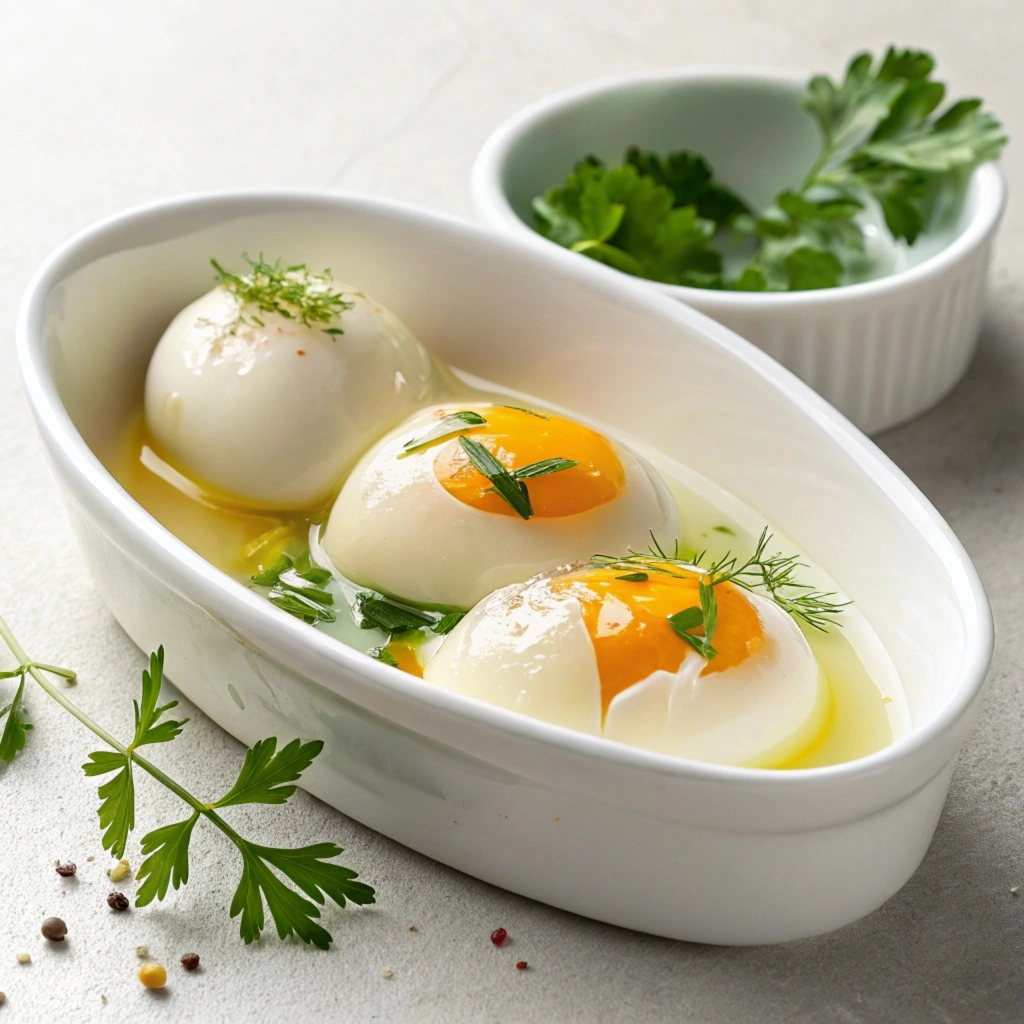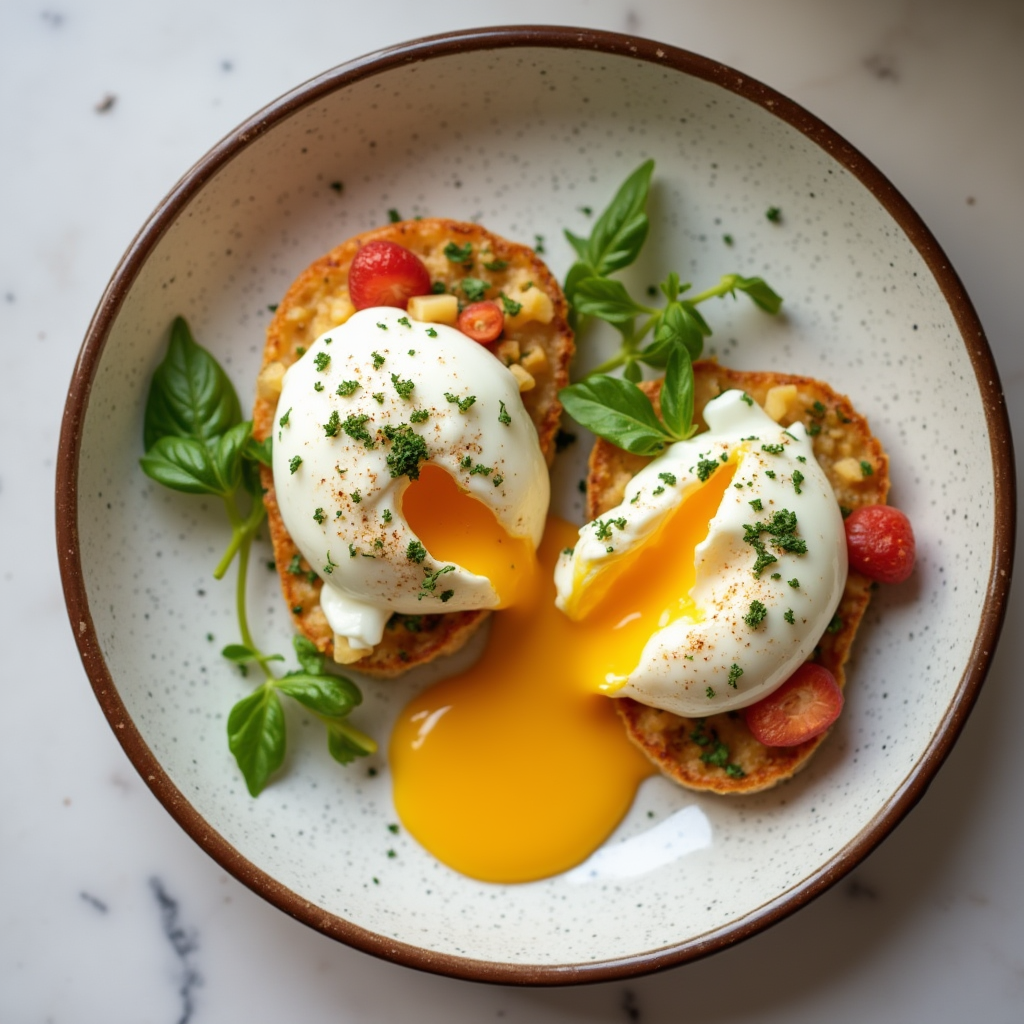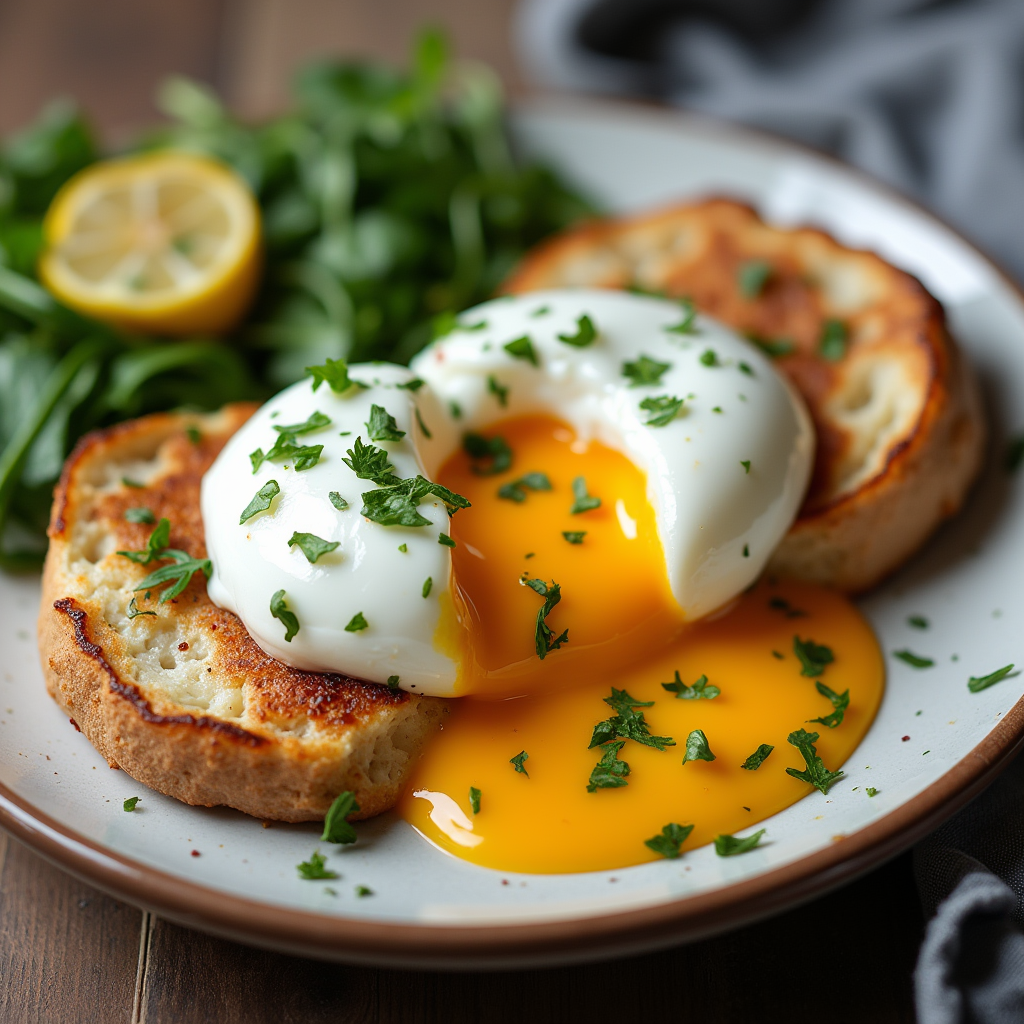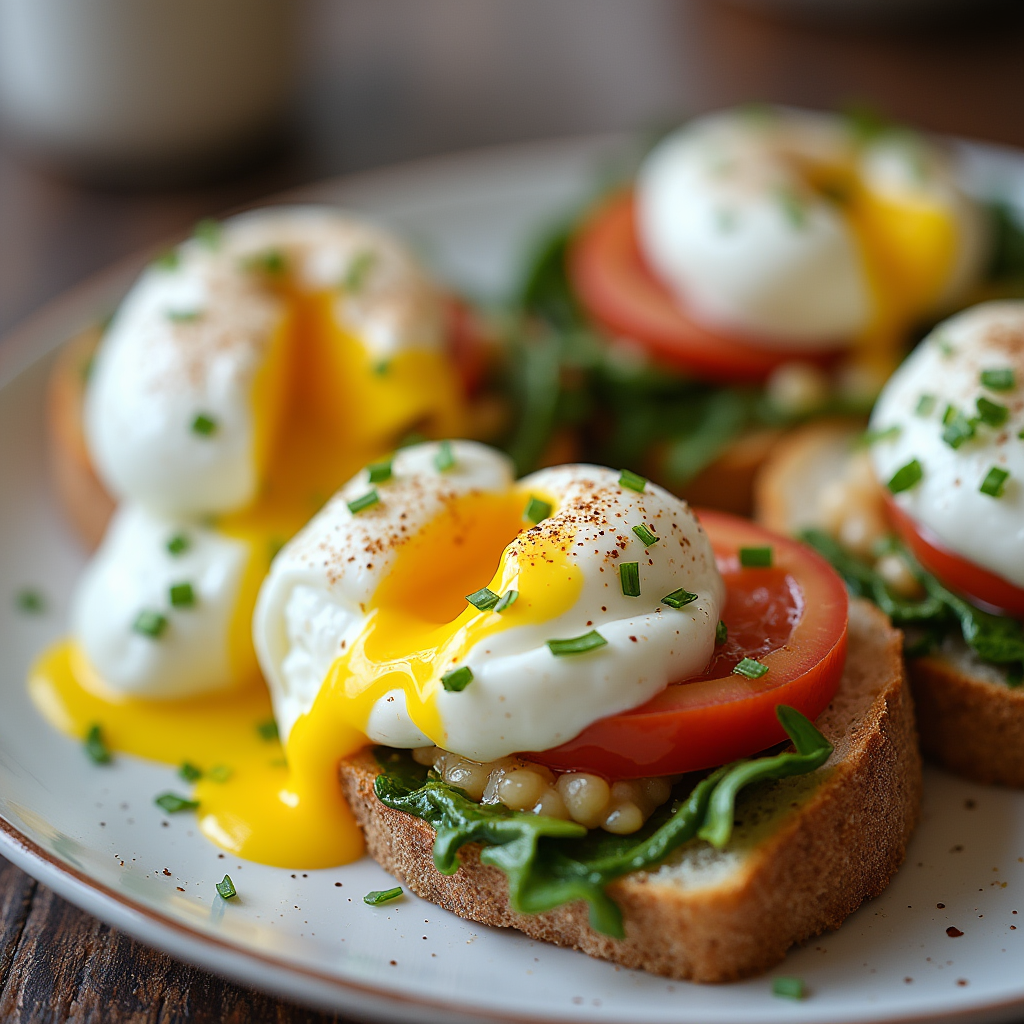Introduction: The Joy of Perfect Poached Eggs
Imagine this: you’re sitting down for breakfast, and in front of you sits the most perfect poached egg you’ve ever seen. The whites are delicately set, and when you slice through the golden yolk, it spills out like liquid sunshine. The flavor? Unmatched.
But if you’ve ever struggled with making poached eggs—whether they turn out too runny, overcooked, or messy—you’re not alone. The art of poaching eggs can seem elusive, but with the right technique, you can achieve perfection every time.
In this guide, we’ll walk you through everything you need to know about making poached eggs, from the essential equipment to the little-known tricks that will guarantee a flawless result. Whether you’re a novice cook or a seasoned pro, you’ll leave this guide confident in your ability to make poached eggs that will impress everyone at your table.

Table of Contents
- What Are Poached Eggs?
- Why Poached Eggs Are Worth the Effort
- What You’ll Need to Make Perfect Poached Eggs
- How to Make Perfect Poached Eggs: A Step-by-Step Guide
- Step 1: Prepare the Water
- Step 2: Crack the Eggs
- Step 3: Poaching the Eggs
- Step 4: Removing and Serving the Poached Eggs
- Common Mistakes to Avoid When Poaching Eggs
- How to Serve Poached Eggs: Creative Recipe Ideas
- Frequently Asked Questions About Poached Eggs
- Conclusion: Master Poached Eggs with Confidence
What Are Poached Eggs?
Understanding Poached Eggs and Their Appeal
Poached eggs are eggs that are cooked by gently simmering in water without the shell. Unlike fried eggs, poached eggs have a tender, smooth texture with perfectly set whites and a runny yolk. They’re a staple in many breakfast dishes, such as Eggs Benedict, or can be served simply on toast with a sprinkle of salt and pepper.
Key Points:
- Definition of poached eggs
- The difference between poached and other egg preparations (boiled, scrambled, fried)
- Poached eggs’ signature texture and flavor

Why Poached Eggs Are Worth the Effort
Discover why poached eggs are a healthier and more flavorful option compared to other egg preparations on Medical News Today’s article on healthy eggs
The Benefits of Poached Eggs
While poached eggs might require a bit more attention than scrambled or fried eggs, the result is well worth the effort. Not only are poached eggs delicious, but they’re also a healthier option since they’re cooked without oil or butter.
Key Points:
- Poached eggs are low in fat and high in protein.
- They’re perfect for those following a healthier diet or trying to avoid extra calories.
- Poached eggs make a beautiful addition to many dishes.
Bullet Points:
- Healthy protein-packed breakfast
- No added fats or oils
- Impressive presentation for any dish
What You’ll Need to Make Perfect Poached Eggs
Essential Tools for Poaching Eggs
While poaching eggs doesn’t require fancy equipment, a few simple tools will help ensure that your eggs turn out just right.
Key Points:
- Fresh Eggs: Fresh eggs are key to achieving perfect poached eggs. The whites hold together better, resulting in a cleaner, more attractive poach.
- Saucepan or Shallow Pan: A wide, shallow pan allows the eggs to spread out and cook evenly.
- Slotted Spoon: This is used to remove the poached eggs from the water.
- Vinegar (Optional): A small splash of vinegar helps the egg whites coagulate faster, but this is optional.
Bullet Points:
- Fresh eggs
- Shallow saucepan or pan
- Slotted spoon
- Vinegar (optional)

How to Make Perfect Poached Eggs: A Step-by-Step Guide
Step-by-Step Instructions for Poaching Eggs
Now that you’ve gathered your tools, it’s time to dive into the poaching process. Follow these steps for perfect poached eggs every time.
Step 1: Prepare the Water
Getting the Water Just Right
Fill your saucepan or shallow pan with enough water to submerge the eggs completely. Bring the water to a simmer over medium heat—ensure it’s not boiling. The key here is a gentle simmer, not a rolling boil, as this can cause the eggs to break apart.
Key Points:
- Use water that’s around 180°F (82°C)—just below boiling.
- Add a teaspoon of vinegar to the water (optional).
- Keep the water simmering, not boiling.
Step 2: Crack the Eggs
Cracking Eggs with Care
To avoid a mess, crack each egg into a small bowl or cup before adding it to the water. This allows you to gently slide the egg into the water without breaking the yolk.
Key Points:
- Crack the eggs one at a time into small bowls.
- Ensure the eggs are fresh for the best poaching results.
Step 3: Poaching the Eggs
Gently Poaching the Eggs
Create a gentle whirlpool in the water by stirring with a spoon. This helps the egg whites wrap around the yolk as they cook. Gently slide the egg from the bowl into the water. Allow it to cook for about 3-4 minutes for soft poached eggs, or longer for firmer yolks.
Key Points:
- The whirlpool method helps the whites stay intact.
- Adjust cooking time based on desired yolk consistency.
Step 4: Removing and Serving the Poached Eggs
Finishing Touches for Poached Perfection
Once the egg whites are set and the yolk remains runny, carefully remove the egg with a slotted spoon. Let it drain for a few seconds before serving.
Key Points:
- Use a slotted spoon to remove the egg gently.
- Let the egg drain briefly to remove excess water before serving.
Common Mistakes to Avoid When Poaching Eggs
Troubleshooting Common Poaching Issues
Even the best cooks sometimes struggle with poaching eggs. Let’s look at some common mistakes and how to avoid them.
Key Points:
- Water Too Hot: Boiling water can cause the eggs to break apart. Keep it at a simmer.
- Not Using Fresh Eggs: Fresh eggs hold their shape better.
- Overcooking: Overcooked poached eggs result in tough whites and dry yolks.
How to Serve Poached Eggs: Creative Recipe Ideas
Delicious Ways to Enjoy Poached Eggs
Poached eggs aren’t just for breakfast. Here are some fun ideas for how to serve them:
Bullet Points:
- Eggs Benedict: A classic recipe with poached eggs, English muffins, Canadian bacon, and hollandaise sauce.
- Poached Eggs on Toast: Top your poached egg with avocado, smoked salmon, or sautéed spinach for a healthy breakfast.
- Salads and Bowls: Add poached eggs to salads or grain bowls for extra protein and flavor.
Frequently Asked Questions About Poached Eggs
Answering Your Poached Egg Queries
Can I poach multiple eggs at once?
Yes, you can poach multiple eggs in the same pan as long as the water is large enough to hold them without crowding.
How do I know when my poached egg is done?
When the egg whites are firm and the yolk is still soft and runny, your poached egg is done.
Can I poach eggs in advance?
Yes, poached eggs can be made ahead of time and stored in water for a few hours in the refrigerator. To reheat, submerge them in hot water for about 1-2 minutes.

Conclusion: Master Poached Eggs with Confidence
You’re Ready to Poach Perfect Eggs Every Time!
Now that you know the secrets to making perfect poached eggs, it’s time to practice! Remember, poaching eggs takes a little patience, but with the right technique, you’ll soon be able to create the perfect poached egg for any dish.
Whether you’re making a gourmet breakfast or adding a poached egg to your favorite salad, mastering this skill will elevate your cooking and impress your guests. Happy poaching!
Call to Action
Ready to try poaching eggs yourself? Grab some fresh eggs and get started today! Don’t forget to share your results with us—what’s your favorite way to enjoy poached eggs? Let us know in the comments!
